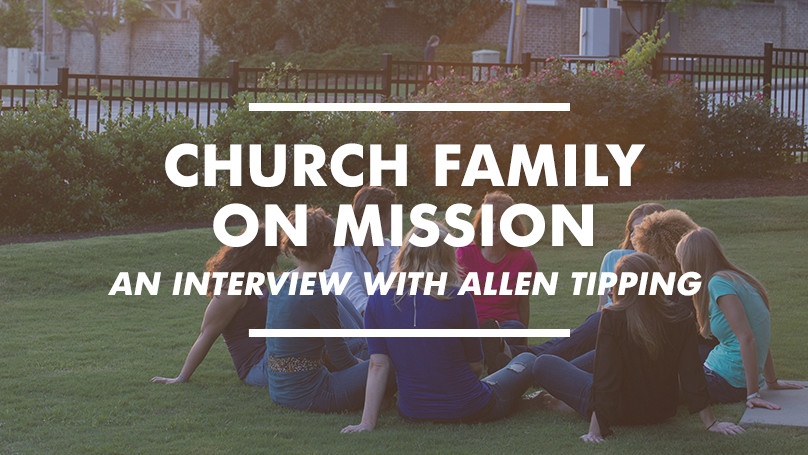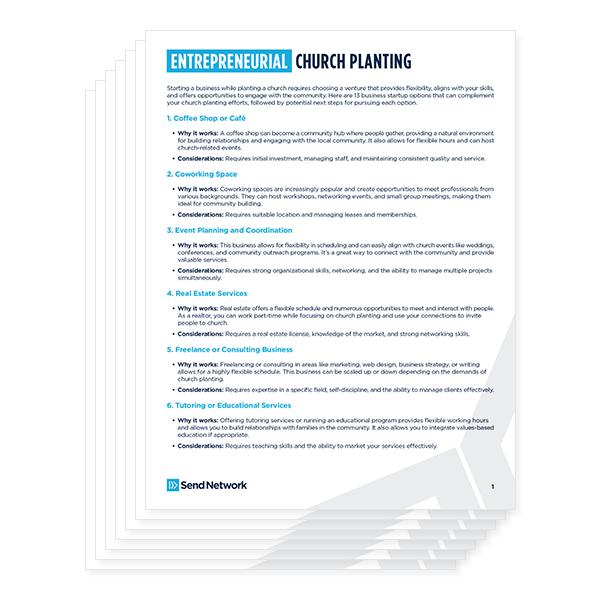Send Network: What is the vision of Midtown Fellowship? Allen Tipping:Our vision statement is, “A Jesus-centered family on mission.” We break that down into three parts. First, is Jesus-centered. We want everything we do to be centered around the person and work of Jesus. Second, we want to live as a real family: the good, bad and the ugly. We do it all together. I honestly think that if you ask most people who are apart of Midtown, family would be the first word they would use to describe us. Third, is living on mission. We push our groups to be on mission with God. Our family is one of the most attractive means of evangelism. So we invite people into our community to not only hear the gospel, but experience it. What they experience is very counter cultural: how we live together, how we are vulnerable together, how we carry one another burdens. We really see inviting people to be part of our church family as one of the main tools God uses to draw people to Himself in our context.
Second, we want to live as a real family: the good, bad and the ugly. We do it all together.
SN: How do these groups function on a weekly basis? AT: A Life Group has three basic rhythms that we would like to see happening on a weekly basis. First, we encourage Life Groups to go to a gathering together. We have four gatherings a week. If you just show up, you may not know anyone and it can, at times, feel intimidating. We encourage Life Groups to choose a gathering to attend together and then try to go out to eat beforehand or afterwards. Our second rhythm is our Group Time. This is where we are going to do intentional discipleship. We try to accomplish four elements during this time. We catch up, because we want to know what’s happening in each other’s lives. We have sermon discussions to apply what we learned on Sunday. We have mission time where we talk about who we are building relationships with that do not know Jesus, and how can we invite them into our community. Then we close out with digging deeper—a time open confession and repentance. The last part we call a Third Place rhythm. We want people to meet in a non-threatening environment, and that usually means somewhere out in the community (dinner or a game of pool), so they can spend time with people in their group, but invite others as well. The third place rhythm is great for both knowing other in a casual setting, but often times this is a great entry point for inviting new people into our group. SN: What are some challenges people face with adopting missional living into everyday life? AT:The challenges we face are like most other churches in America. We live in a cultural current of individualism, materialism and consumerism. If we are not aware of them and actively pushing against them then we will naturally drift in to them. To be a family on mission means we are calling people to do life with other people and that means we must invite people into our schedules and into who we really are. We are asking people to sacrifice time, their schedule and money for the family and mission of God. A lot of what happens when we call people into this is it exposes our idols—whether that be comfort, control, or acceptance. Mission is good because it exposes things we may not notice otherwise. I don’t think we understand naturally how individualistic, independent and self-sustaining our society is. It’s not an easy transition to say the least. If you are going to do this, it’s going to be messy, but messy is not bad.
To be a family on mission means we are calling people to do life with other people and that means we must invite people into our schedules and into who we really are.
SN: What is your process for letting people lead out in Life Groups once they are ready? AT: We call it our leadership pipeline. They must first be involved in a Life Group and then become a member of our church. If they are interested in becoming a Life-Group leader, or if their Life-Group leader sees potential in them, we enter them into our leader-in-training process. Our leader-in-training process is a basic apprentice model: I do, you watch; I do, you help; you do, I help; you do, someone new watches. After that, we do what we call Basic Training – a one-day class where we meet the leaders-in-training and pour into them for a few hours. And then, we launch out groups but continue with ongoing leader development about three times a semester. SN: What is the size and demographics of your Life Groups? AT:We have co-ed groups that typically run closer to 20 people and then our gender-specific groups will be closer to 10 to 12. We have college groups, split into men and women, then we have co-ed groups for adults, that could be single or married adults. We consider anyone out of college, or 24, to be an adult.
It’s a tangible way of understanding and experiencing God’s love for us. So even when it’s messy, it’s family—that is what Jesus draws us to.
SN: How do children fit into the group? AT: So, the first rhythm of going to gathering should be a very family-oriented thing. As far as group time, the preference is that we have about two hours a week where we are primarily focused on adults and really pour into each other. Then the Third Place rhythm, if you have children, would be planning to use that time for family time as well. You want to plan things that are beneficial for everybody. SN: Why do you think Life Groups within your church has been so effective? AT: I think it’s being family. We have a lot of people who come from broken families and people who don’t know what family should really look like. So when they see it and experience it, man it’s good. It’s a tangible way of understanding and experiencing God’s love for us. So even when it’s messy, it’s family—that is what Jesus draws us to.
Published December 2, 2015




